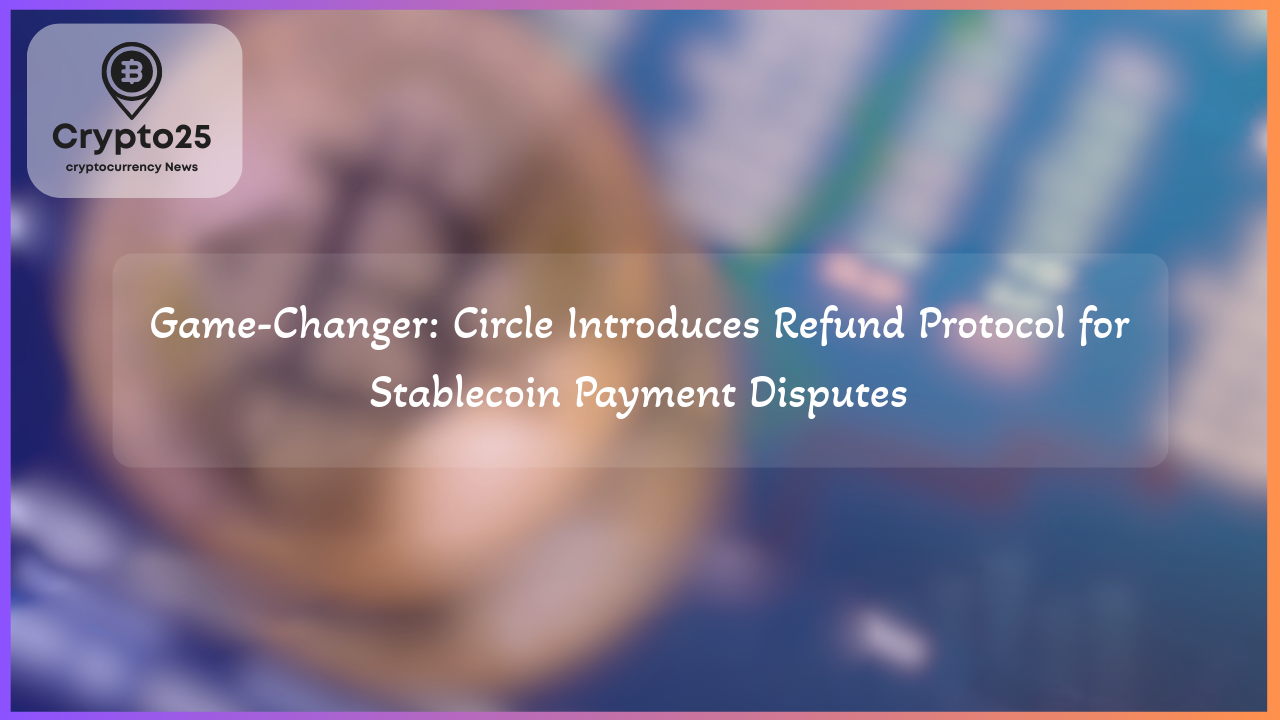
Circle, a prominent player in the crypto industry, has unveiled its groundbreaking Refund Protocol, a non-custodial smart contract system designed to revolutionize stablecoin transactions. Launched on April 17, this transformative innovation addresses a significant pain point in using stablecoins: the lack of a robust mechanism for refunds or chargebacks. By enhancing dispute resolution processes, Circle aims to further mainstream stablecoin payments globally.
### Circle’s Refund Protocol: A Game-Changer in Stablecoin Transactions
The introduction of Circle’s Refund Protocol represents a major step forward in stablecoin payment technology. By leveraging a non-custodial framework, the protocol ensures that users can navigate disputes seamlessly without relying on centralized authorities. The system empowers designated arbiters with specific permissions, allowing them to lock funds temporarily, authorize refunds to pre-defined payer addresses, and facilitate negotiated early withdrawals. Notably, this approach preserves the decentralized nature of stablecoins, as arbiters are prohibited from transferring funds arbitrarily.
Circle CEO Jeremy Allaire highlighted that the Refund Protocol builds upon the company’s previous open-source initiatives for confidential and reversible payments. The ultimate goal, he emphasized, is to make stablecoin transactions more accessible and appealing for mainstream adoption. This aligns closely with Circle’s broader efforts to promote its dollar-pegged USDC stablecoin, which has already gained traction as Binance Pay’s default currency for new users.
### How the Refund Protocol Works in Practice
At the core of Circle’s Refund Protocol is the efficient use of smart contracts to manage payments and mitigate disputes. When a customer makes a payment using any ERC-20 token, the funds are routed to a smart contract instead of being sent directly to the recipient. This contract meticulously records key transaction details, including the recipient and refund addresses, along with the total payment amount. Such an arrangement ensures that transactions are transparent and traceable.
In cases of disputes, such as the non-delivery of purchased goods or services, customers have two options. They can either resolve the issue directly with the merchant or escalate the matter to an authorized arbitrator. If a refund is approved within the designated lockup period, it can be executed without any custodian holding the funds. After the lockup expires and no disputes are pending, recipients can withdraw their funds from escrow freely. Additionally, merchants can authorize early withdrawals off-chain, agreeing to any negotiated fees through their digital signatures.
While this system addresses some fundamental challenges in stablecoin transactions, it is not without limitations. For example, malicious behavior by arbiters, gas inefficiencies associated with individual escrow management, and complexities in handling refund addresses remain pertinent challenges. Circle has acknowledged these issues, emphasizing its commitment to further refining the technology.
### Opportunities for the Future of Stablecoin Payments
Despite its current limitations, Circle’s Refund Protocol lays a strong foundation for more advanced and resilient stablecoin payment systems. One notable drawback is the inability of escrowed funds to generate yield under the present setup. Recognizing this, Circle has proposed integrating decentralized finance (DeFi) capabilities, such as lending protocols like Aave, into the Refund Protocol in future releases. This enhancement could allow locked assets to earn interest, sharing profits between recipients and arbiters, and adding an entirely new dimension to stablecoin transactions.
In addition to these improvements, Circle’s focus on developing scalable solutions paves the way for wider adoption of stablecoins in global commerce. By addressing the pain points of existing systems, the Refund Protocol could foster greater trust in stablecoin ecosystems. It also highlights the importance of continual innovation in crypto infrastructure and its potential to disrupt traditional payment systems.
### Conclusion
With the launch of the Refund Protocol, Circle has set a new benchmark in utilizing blockchain technology for stablecoin transactions. By offering a non-custodial, dispute-resolution mechanism integrated into smart contracts, this groundbreaking system enhances transparency, security, and efficiency. As Circle continues to refine the protocol and integrate advanced functionalities, such as yield generation, the road ahead looks promising for stablecoin adoption on a global scale.
| Title | Details |
|---|---|
| Market Cap | $1.2 Trillion |
